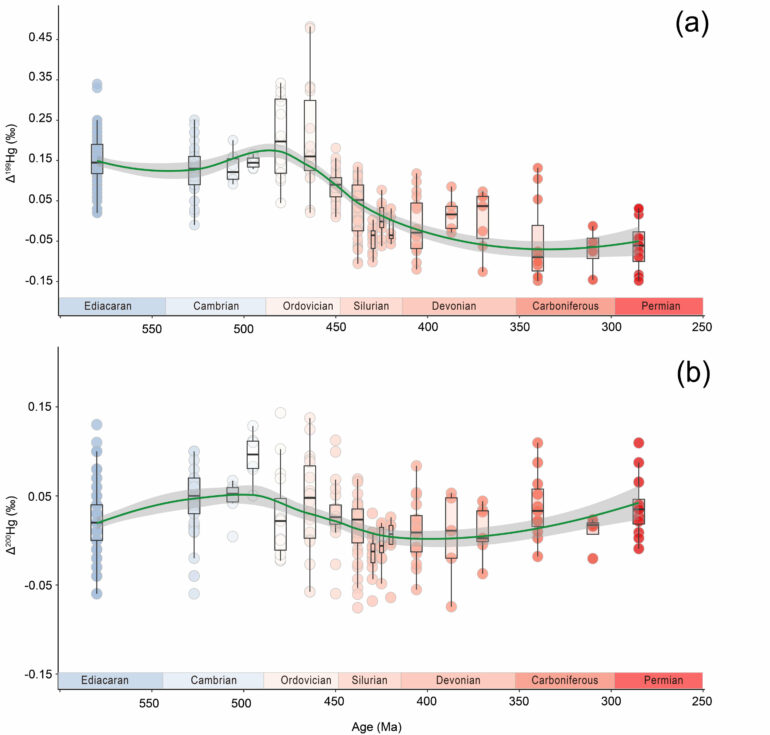The colonization and expansion of plants on land represent a defining landmark for the path of life on Earth. Terrestrial colonization has been attributed to a series of major innovations in plant body plans, anatomy and biochemistry that transformed global biogeochemical cycles and climates.
It is crucial to identify the onset and track the expansion of those earliest land plants. However, the precise timing of land colonization by vascular plants remains controversial due to the sparseness of early land plant megafossils, poor stratigraphic controls on their distribution and the uncertainties associated with molecular clock calculations.
Recently, scientists led by Prof. Chen Daizhao from the Institute of Geology and Geophysics and Prof. Feng Xinbin from the Institute of Geochemistry of the Chinese Academy of Sciences (CAS) used a mercury isotope to prove that vascular plants had already extensively colonized land by the early Silurian (~444 Ma). This work was published in Science Advances on April 28.
Researchers from the Xishuangbanna Tropical Botanical Garden of CAS, the Nanjing Institute of Geology and Paleontology of CAS, the Chinese Geological Survey, the Open University, U.K., and the College of Charleston, U.S., were also involved in the study.
Mercury (Hg) is the only heavy metal element that is liquid under natural conditions. It is also transported globally in gaseous elemental form (Hg0) via atmospheric circulation. The most important realization about modern forest Hg cycling in recent decades has been that Hg in vegetation is derived from atmospheric Hg0 assimilation via leaves rather than from precipitation Hg or geologic Hg transport.
Land vegetation preferentially transfers atmospheric Hg0, which displays distinct negative odd mass independent fractionation (odd-MIF, reported as Δ199Hg) and even-MIF (reported as Δ200Hg) signatures, into terrestrial ecosystems. As land plants expanded and affected weathering in terrestrial settings, Hg containing these unique negative Δ199Hg and Δ200Hg values would be transported to nearshore marine environments, which showed significant positive signatures primally. Therefore, the geologic record of these isotopic systems potentially provides a novel tracer to track the colonization and expansion of plants on land.
In this study, the researchers used Hg stable isotope data from marine sediments spanning the Cambrian to Permian from different depositional facies collected from South China to highlight two episodes of distinct negative excursions in both odd- and even-MIF values at the stage level in the Silurian and Carboniferous.
They established a numerical model to quantify secular variations in the contribution from terrestrial organisms for the Paleozoic. They found that the results pushed back in time the extensive spread of early vascular plants to ~444 Ma in the early Silurian, at least in low-latitude areas like South China—a time period that is significantly earlier than the first known macrofossil of a vascular plant.
The study linked the Paleozoic expansion of terrestrial organisms, notably vascular plants, to the co-evolution of a range of Earth systems, particularly those of the atmosphere, oceans, weathering processes, and geochemical features.
More information:
Wei Yuan et al, Mercury isotopes show vascular plants had colonized land extensively by the early Silurian, Science Advances (2023). DOI: 10.1126/sciadv.ade9510. www.science.org/doi/10.1126/sciadv.ade9510
Provided by
Chinese Academy of Sciences
Citation:
Isotope study shows vascular plants had colonized land extensively by the early Silurian (2023, April 28)



